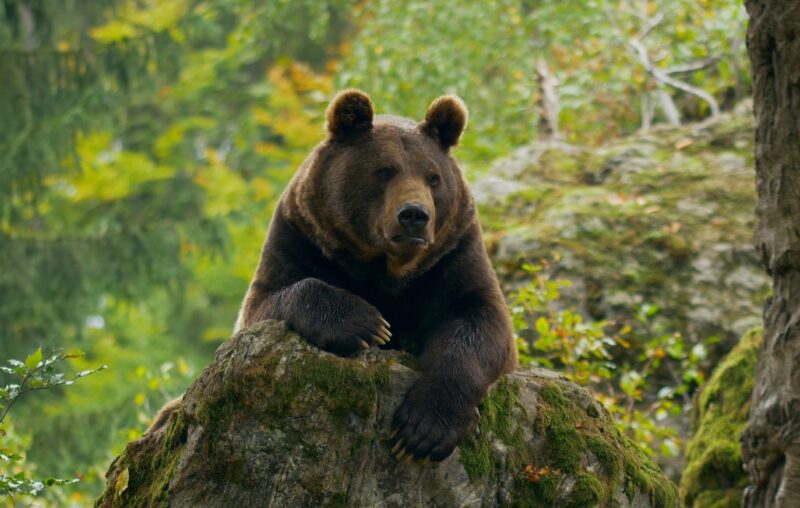Montana is a beautiful state, known for its stunning landscapes from the Rocky Mountains to the Great Plains, but it is also home to some of the most deadly animals in North America.
Let’s check out the 10 most dangerous animals living in the “Last Best Place.”
The howl of a wolf is a sound that captures the essence of Montana’s wilderness. Encounters with humans are rare, but it’s still important to be aware of their presence and potential danger. Wolves are pack animals that live in Montana’s forests and open meadows. Their diet primarily consists of large ungulates, such as deer and elk, but they’re also known to eat smaller animals and even fish.Key Takeaways
10. Wolves (Canis lupus)
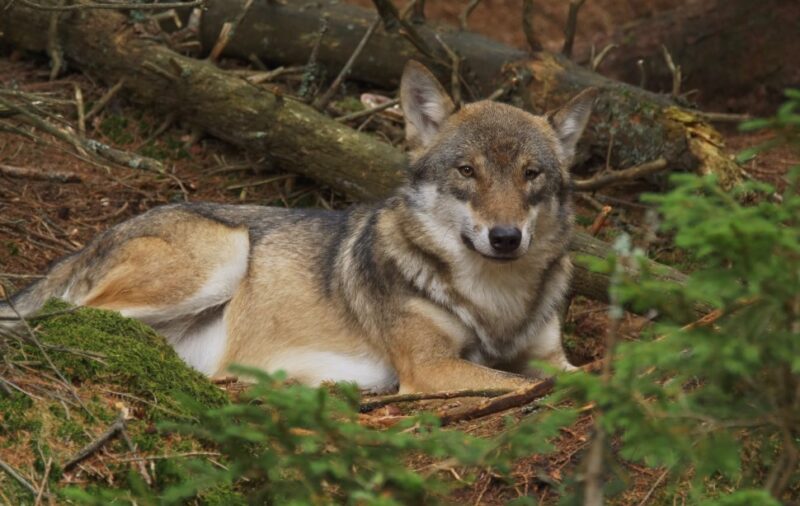
Habitat and Behavior
Why Are They Dangerous?
9. Wolverine (Gulo gulo)
This robust and elusive creature is often recognized by its stocky build, thick fur, and distinct facial markings. While sightings in the contiguous United States are rare, wolverines are a prominent figure in the cold northern regions.
Habitat and Behavior
Wolverines favor cold, remote terrains, often seen in alpine meadows, boreal forests, and Arctic tundras. They are solitary animals with vast territories, known for their strength and endurance, often traveling long distances in search of food.
Why Are They Dangerous?
- Tenacious predators – Despite their relatively small size, wolverines have been known to take down prey much larger than themselves and even steal food from larger predators like bears or wolves.
- Adaptable survivalists – With their dense fur and specialized metabolism, wolverines can survive in harsh, frigid environments, making them one of the most resilient creatures of the north.
- Sense of smell – Their olfactory abilities are so sharp that wolverines can detect prey buried beneath the snow, making them efficient scavengers during winter months.
8. Grizzly Bears (Ursus arctos horribilis)
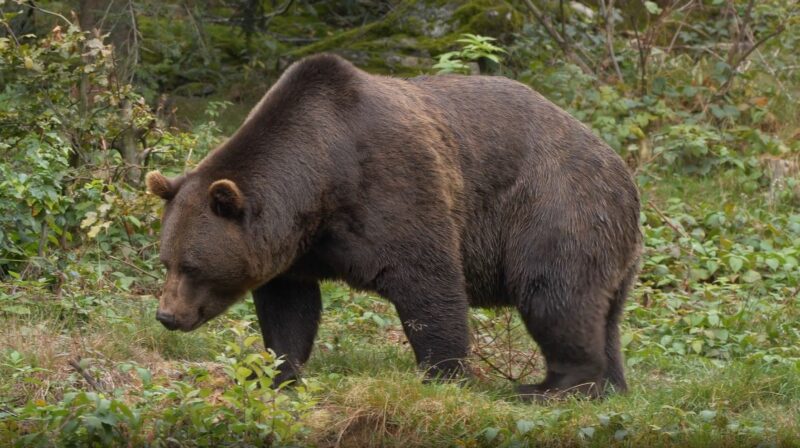
Synonymous with the wilderness of Montana, the grizzly bear is both revered and feared. These massive creatures are symbols of the wild frontier but can be deadly when provoked.
Habitat and Behavior
Grizzly bears have a diverse diet, ranging from berries and plants to fish and larger mammals. They inhabit a variety of terrains but are often found near rivers during salmon spawning seasons.
Why Are They Dangerous?
- Imposing size – Grizzlies can weigh up to 800 pounds and stand at a height of 8 feet when on their hind legs.
- Unpredictable behavior – While they are generally not aggressive unless provoked, they can attack if they feel threatened, especially mothers with cubs.
- Powerful predators – Equipped with sharp claws and a strong bite force, a grizzly can take down large mammals with ease.
7. Elk (Cervus canadensis)
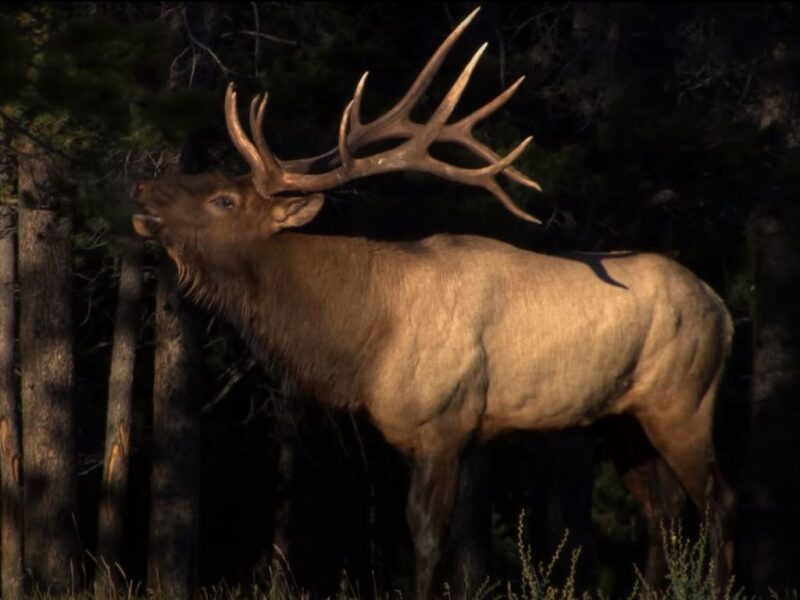
They are majestic and a popular sight for wildlife enthusiasts, but they can pose a threat if they feel threatened or during their mating season.
Habitat and Behavior
Elk are social animals, often seen in herds, and inhabit a range of environments from forests to open plains. Their diet consists of grasses, plants, and bark.
Why Are They Dangerous?
- Large size – Bull elks can weigh up to 1,000 pounds.
- Aggressive during rut – Male elk become particularly aggressive during the mating season and can charge with little warning.
- Sharp antlers – Bull elk have large, sharp antlers that they use during fights and can inflict severe injuries.
6. Moose (Alces alces)
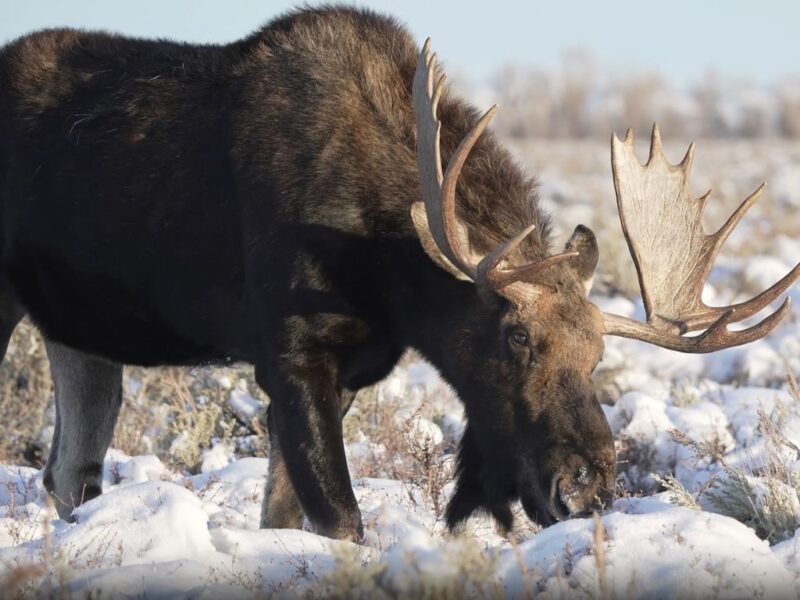
They may appear gentle and somewhat clumsy, but moose are among the largest and most unpredictable wild animals in Montana. Their massive size combined with their temper can make for a dangerous combination.
Habitat and Behavior
Moose are typically found near bodies of water, such as lakes, ponds, and streams, where they feed on aquatic vegetation. They are also known to consume shrubs and young trees, making them frequent visitors to forested areas.
Why Are They Dangerous?
- Size and strength – Standing over 6 feet tall at the shoulder and weighing up to 1,500 pounds, moose are formidable animals.
- Mating season – Male moose, known as bulls, can become very aggressive during the fall mating season.
- Protective mothers – Similar to bears, female moose are extremely protective of their calves and can charge if they perceive a threat.
5. Bobcats (Lynx rufus)
They might be smaller compared to some of Montana’s other predators, but don’t let their size fool you. These solitary hunters are incredibly agile and equipped with sharp teeth and claws.
Habitat and Behavior
Bobcats are solitary creatures, marking and defending territories that can range from one to several square miles. They are most active during dawn and dusk, known as crepuscular animals, and can be spotted in various habitats, including forests, swamps, and suburban areas.
Why are they dangerous?
- Stealthy hunters – Bobcats are skilled hunters, often ambushing their prey from a hidden vantage point.
- Sharp claws and teeth –They usually target smaller animals, but bobcats can defend themselves fiercely when threatened.
- Territorial Disputes – Bobcats can become aggressive if another animal or human enters their marked territory.
4. Golden Eagles (Aquila chrysaetos)
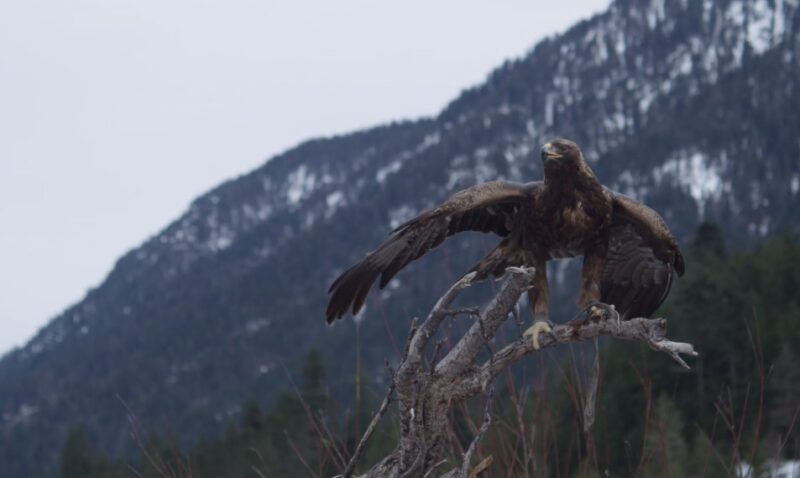
They are not traditionally seen as dangerous to humans, but golden eagles have the power and precision that pose a threat, especially to smaller animals and unsuspecting prey.
Habitat and Behavior
Golden eagles are commonly found in mountains and open terrains. With a wingspan that can reach over 7 feet, they are adept hunters, preying on animals ranging from rabbits to young deer.
Why Are They Dangerous?
- Impressive talons – Their sharp talons can exert a grip pressure of over 400 pounds per square inch.
- Precision in flight – Golden eagles can dive at speeds of up to 150 mph to catch their prey.
- Protective parents – Like many wild animals, golden eagles can become aggressive when defending their nests and chicks.
3. Black Widow Spider (Latrodectus hesperus)
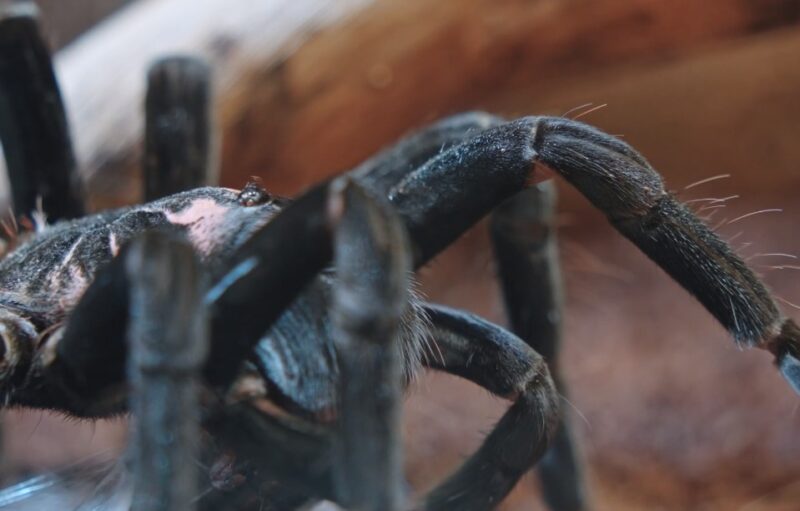
Size truly doesn’t matter when it comes to the black widow spider, one of North America’s most venomous arachnids. With venom far more potent than that of a rattlesnake, they remind us that danger in Montana can come in very small packages.
Habitat and Appearance
Found throughout Montana, black widows prefer dark, secluded spots. They can often be discovered in woodpiles, under rocks, or in seldom-disturbed storage areas. These spiders are usually shiny black, and females sport the renowned red hourglass shape on the underside of their abdomen.
Why Are They Dangerous?
- Potent venom – A black widow’s venom is said to be 15 times more potent than that of a rattlesnake, affecting the nervous system of its victim.
- Stealthy nature – Due to their preference for dark, quiet places, accidental human encounters can happen when reaching into areas where the spider resides.
- Painful bites –Though death from a black widow bite is rare, the bite can cause intense pain, muscle rigidity, and other symptoms requiring medical attention.
2. Bison (Bison bison)
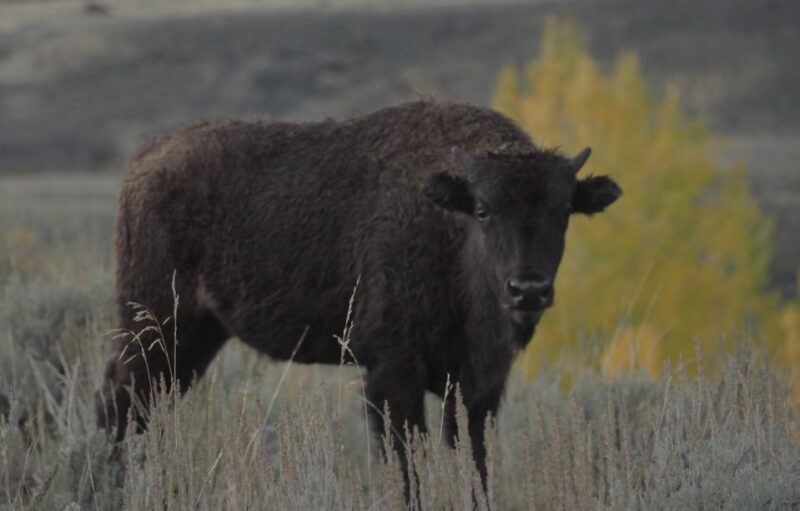
Bison are an iconic symbol of the American West. They wander across Montana’s plains in groups, usually calm but can be unexpectedly wild. Their size and speed are a reminder of the untamed nature of the wilderness. Respect their space, and they’ll respect yours—usually.
Habitat and Behavior
Bison primarily graze the plains of Montana, living in herds and following a migratory pattern. These massive animals can weigh over a ton and can run at speeds up to 35 mph. Though they appear calm, bison can become aggressive if they feel threatened.
Why Are They Dangerous?
- Imposing size – The sheer weight and size of bison mean they can inflict severe injuries with ease.
- Unpredictable behavior – Despite their often peaceful demeanor, bison can charge without much warning.
- Territorial nature – Especially during the rutting season, male bison can be particularly aggressive.
1. Mountain Lions (Puma concolor)
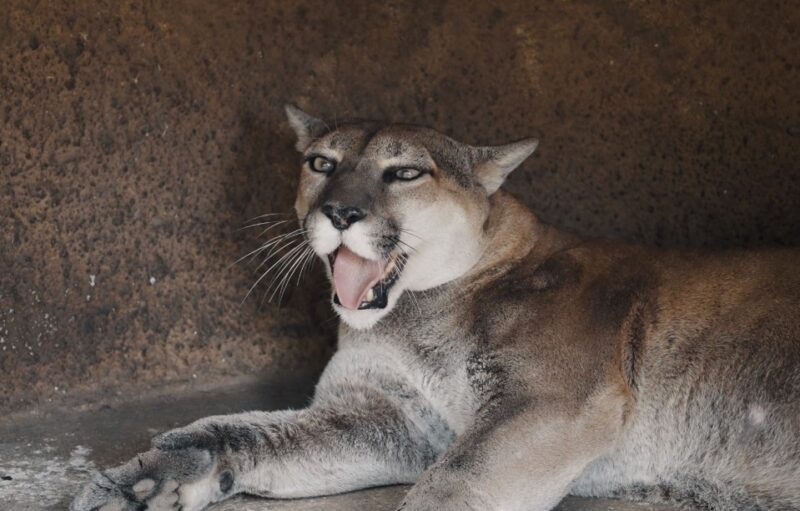
They are also known as cougars or pumas. Mountain lions are apex predators of Montana’s wilderness. Their sneakiness and strength make them some of the toughest animals around.
Habitat and Behavior
Mountain lions are large cats, with males weighing between 115 and 220 pounds. They possess strong muscular bodies, enabling them to take down prey much larger than themselves.
Typically solitary creatures, mountain lions are known for their elusive nature, making human encounters relatively rare. But, when cornered or if a female’s cubs are threatened, they can become particularly aggressive.
Why They’re Deadly
- Strength and agility – These cats can cover 40 feet in a single leap and climb trees with ease, making escape difficult.
- Powerful jaws – A mountain lion’s bite can crush bone, and they typically go for the neck, aiming to sever the spinal cord of their prey.
- Stealth predators – They are masters of the ambush, often stalking their prey silently before striking.
Encounters with wildlife are not uncommon, so it’s a good idea to know emergency contact information. You can also use this contact list to report if you have seen a wild animal that needs help or that has found itself in areas where people live.
Wildlife Emergency
FAQs
I’m Noel Massey, your not-so-typical trailblazer who’s been into hiking for years while herding two mini adventurers, a.k.a. my sons. We’ve tackled trails that would make your GPS do a double-take. Join me as I share tales from the great outdoors, and share some handy tips you could use in the future.

